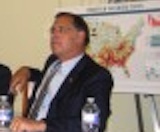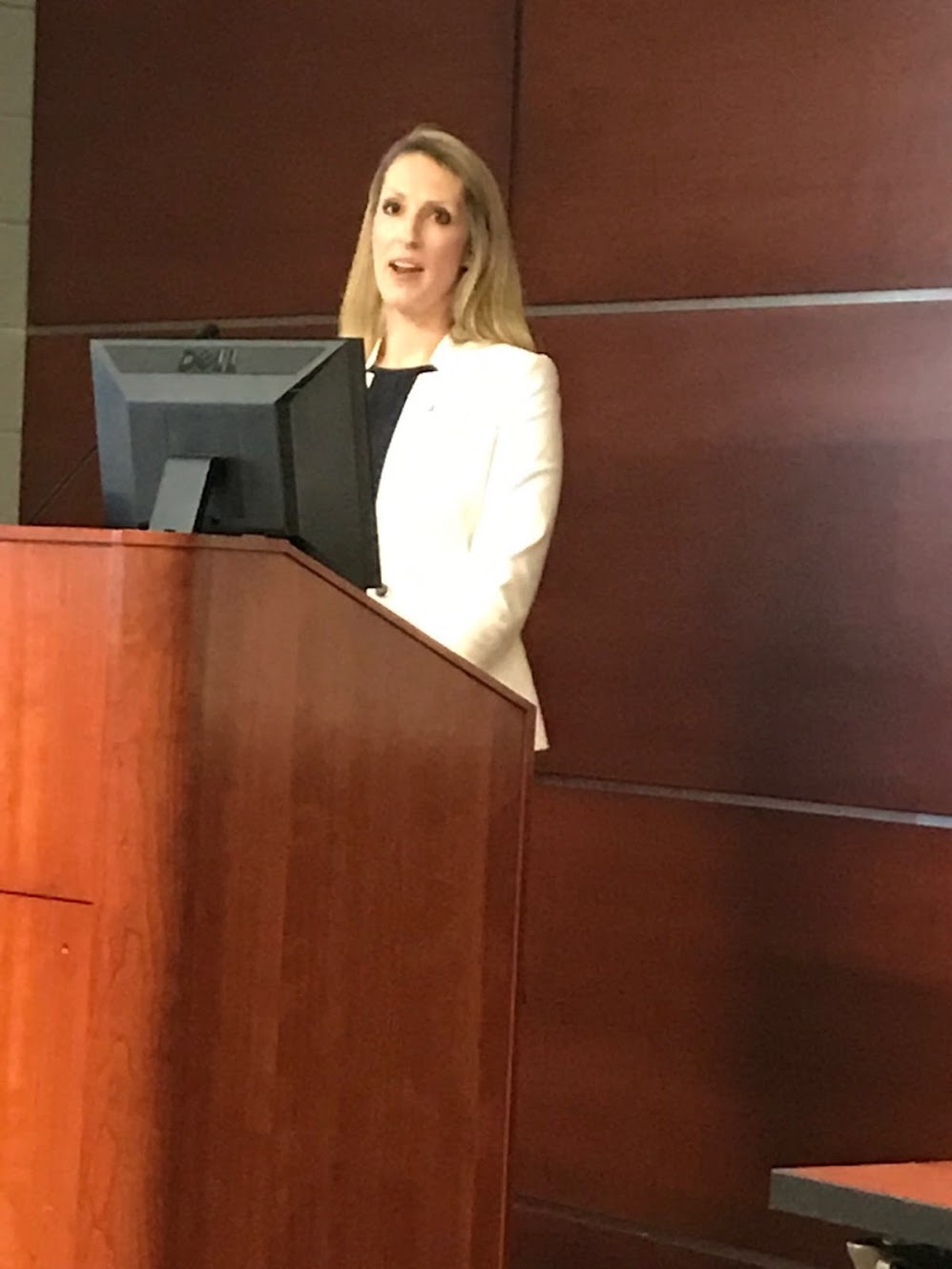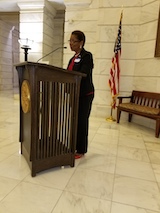Economic Equality Caucus
which advocates for economic equality across the USA.
| Home | Organizational Structure | State Coordinators | Executive Director | Caucus Articles | Memberships | |||||
| "Delta Vision, Delta Voices" | ||||||||||
|
Help Advocate for Economic Progress and Equality. Donate to the Delta Caucus/Economic Equality Caucus. |
||||||||||
Delta Grassroots Caucus Events

Credit Michael Hibblen/ KUAR News, Arkansas Public Radio; Former President Bill Clinton speaking to the Delta Grassroots Caucus on May 2, 2013, at the University of Arkansas Clinton School of Public Service, Little Rock

U. S. Senator John Boozman, Arkansas, at a Delta Grassroots Caucus meeting at the US Capitol

Brad Cole, Executive Director of the Municipal League of Illinois; previously a senior aide to former Republican US Sen. Mark Kirk of Illinois, earlier Mayor of Carbondale, Illinois, veteran Delta regional advocate, speaking at the Delta regional conference in West Memphis, Arkansas on April 26, 2019.

President Bill Clinton makes a comment to Delta Caucus Director Lee Powell at a meeting in Blytheville, Arkansas (in the northeast Arkansas Delta) on Nov. 2, 2014

The Delta Caucus would like to pay tribute to the late, great U.S. Sen. Thad Cochran of Mississippi, a powerful force in the US Senate for decades and a champion for the Delta. Sen. Cochran passed away on May 30, 2019. He spoke to the Delta Caucus on many occasions over the years (he is pictured above speaking to a Caucus event on Capitol Hill in Washington, DC) and his thoughtful, courteous and bipartisan leadership will be sorely missed.

Marcie Lawson, Executive Director, Sikeston, Missouri Regional Chamber and Area Economic Development Corporation, speaking at the Delta regional conference in West Memphis, Arkansas on April 26, 2019.

Alan Gumbel, Greater Memphis Alliance for a Competitive Workforce, Memphis, Tennessee, speaking at the Delta regional conference in West Memphis, Arkansas on April 26, 2019.

Mayor Shirley Washington of Pine Bluff, AR, speaking to the Delta Caucus at the Arkansas Capitol Rotunda in 2017.
Pending Nutrition Legislation Is Vital for the Greater Delta Region
Posted on November 18, 2010 at 01:05 PM
Recent USDA data on food security showed that nationwide nearly one in four children in America–17 million kids–live in families that struggle to put food on the table. The situation is much worse in the Greater Delta region: five of the Delta states are ranked among the eight worst food insecurity rates in the entire country, with Arkansas and Mississippi having two of the worst three states, and Tennessee, Alabama and Missouri also having unusually high levels.
The need for a strong nutrition safety net in the Delta has never been greater, but time is running out for passage of the vital child nutrition bill, which was passed by the Senate in August. The House of Representatives needs to act before December 3, 2010.
Arkansas’ level of 17.7 percent pf households having low food security was the worst in the nation, with Mississippi as the third worst at 17.1 percent. Tennessee was the sixth worst at 15.1, and Alabama and Missouri were seventh and eighth at 15.0 percent each. As we all know, the Delta areas of our states are even worse than the statewide totals.
We would encourage our partners to contact your Congressional delegations and ask them to pass S.3307, the Healthy Hunger-Free Kids Act. Hungry children in the Delta can’t wait any longer for improvements to breakfast, after school, and summer meal programs.
For the lame duck session, child nutrition programs remains on its to-do list. The bill, passed by the Senate and being considered by the House, would invest an additional $4.5 billion in child nutrition programs but is partially financed by cuts to future SNAP benefits. There is no doubt that SNAP benefits are the first line of defense against hunger, and in fact data discussed below demonstrate that the increase in SNAP benefits in early 2009 kept the food insecurity rate from becoming far worse. Many of our nutrition experts would agree with FRAC president Jim Weill’s comment that “We all want to see a child nutrition bill move forward in the lame duck session, and we still believe Congress can address the SNAP cuts as well before it adjourns,” noted Weill. “There is still an opportunity and a need to accomplish both of these goals.”
Although Louisiana’s food insecurity level of 10% was not as high as most of the other Delta states, we know that for many of the parishes in the heart of the Louisiana Delta as well as the southern Louisiana areas in New Orleans and other areas that suffered from Hurricane Katrina and the oil disaster, the situation is much worse. We would like to include an excerpt here from the statement of Natalie Jayroe, President and CEO of Second Harvest Food Bank of Greater New Orleans and Acadiana, at the Delta Caucus conference in Washington, DC this fall:
“Strengthening the relationships between government and nonprofits is not only the key to better and more effective disaster response, but to address what all of us in the Delta region understand too well: the hidden hurricane of chronic poverty. Sadly, with the economy‘s decline, the reach of poverty is extending to more and more communities across America. The new numbers from the Current Population Survey tell us that in 12 short months, poverty in America jumped from 13.2% to 14.3% - and we all know that this number doesn’t include many individuals and families struggling with the effects of foreclosure, job loss, illness, and food insecurity. In the twenty-three parishes that Second Harvest serves, our agencies have seen increases of 15 to 25% since May 1st.
Communities struggling to regain stability and sustainability have been rocked by job losses stemming from the oil spill, and their supplemental food source – The Gulf of Mexico – is contaminated for the foreseeable future.” (The full text of Natalie Jayroe’s statement is available on the website by clicking on the “Caucus articles” link above and scrolling down to her statement of October 1, 2010.)
Kentucky’s food insecurity level was 13.4 percent and Illinois’ was 12.2 percent, although here the statistics are much less meaningful because western Kentucky and southern Illinois have such relatively tiny percentages of their state’s populations, unlike Louisiana, Arkansas, and Mississippi, where the DRA areas are half or more of the population.
The Food Research and Action Center is a major nonprofit organization in the field of hunger and nutrition, and we commend their efforts, along with such organizations as Bread for the World, Feeding America and others for disseminating data on the disturbing news about food insecurity during this time of economic troubles. More than 50 million Americans lived in households struggling against hunger in 2009, according to new data released by the U.S. Department of Agriculture (USDA). Of them, 17.2 million are children (23.2 percent of all children). Previously, in 2008, 49.1 million Americans were in food insecure households. The 2009 number is the highest since USDA first started the survey in 1995.
The number of people in the worst category (“very low food secure” households) rose from 17.3 million to 17.7 million. The number of people in this category in 2009 is more than double the number in 2000.
As FRAC has noted, there were especially large increases from 2008 to 2009 for households with children under age six (from 22.3 percent to 22.9 percent – and up from 17.1 percent in 2007), married couple families with children, households living in poverty, suburban households, and households in the West. The rate for white, non-Hispanic households rose, while that for African American households fell and the Hispanic household rate was unchanged.
FRAC has correctly pointed out that improvements in federal nutrition programs in 2009 and increases in SNAP benefits (formerly called food stamps) prevented hunger from becoming much worse during the economic troubles. The increase in 2009 is very modest compared to what happened in 2008. From 2007 to 2008, according to USDA data released a year ago, the number of people in food insecure households leapt from 36.2 million to 49.1 million. 2008 was the first year of the recession.
We would like to quote here from FRAC president Jim Weill: “From 2008 to 2009, however, even as the recession deepened, food insecurity rose only very slightly. This was true even though unemployment, which had risen from five percent in December 2007 to 7.4 percent in December 2008, went up to 10 percent in December 2009. FRAC attributes the relatively flat food insecurity rate in 2009 to nutrition program improvements.”
“Food insecurity remains far too common and far too high,” said Jim Weill, FRAC president. “But the fact that the numbers did not increase dramatically demonstrates just how important the federal nutrition programs were to millions of America. Participation in those programs, especially SNAP, has grown to meet the rising need.”
“Equally important, the increase in SNAP benefits that was included in the economic recovery act and took effect in April 2009 had a particularly powerful effect in keeping hunger from getting worse,” Weill added.
“Quite simply, the increase in SNAP benefits worked. The goal of increase was to provide stimulus to the economy, help people weather the worst of the recession, and make SNAP more adequate to get through the month. The fact that hunger rates did not skyrocket as they did last year shows just how effective and essential that increase was and still is,” said Weill.
This finding is buttressed by FRAC’s analysis of Gallup polling data showing a sustained drop in families struggling with food hardship beginning in the spring of 2009, despite the worsening recession.
Since 1995, the United States Department of Agriculture, using data from surveys conducted annually by the Census Bureau, has released estimates of the number of people in households that are food insecure. Food insecure households are those that are not able to afford an adequate diet at all times in the past 12 months. The report also includes food insecurity rates for each state, but for states it uses three-year averages to give a better estimate of the number of households experiencing food insecurity. Experts agree that the Census/USDA measure of food insecurity is a conservative one, with the result that only households experiencing substantial food insecurity are so classified.
Please communicate with your Members of Congress about the vital child nutrition legislation. Thanks–Lee Powell, executive director, (202) 360-6347
Back to the top